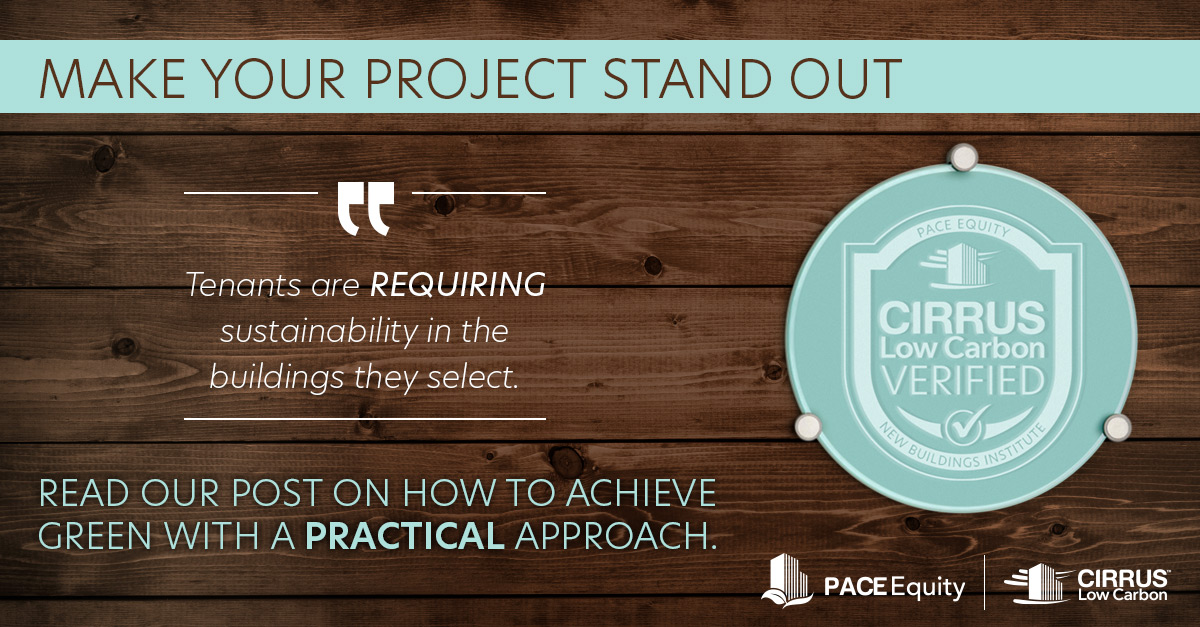Can a simple building plaque move the needle in commercial real estate? Answer: yes. It’s true that some tenants may not realize what the plaque signifies. But more and more, tenants & visitors recognize that a green building plaque means they are entering a place with state-of-the-art technology and design that saves energy costs, reduces carbon emissions, and delivers an efficient and healthy environment.
According to a late 2021 report from JLL, “Sustainability is now a key [criterion] in building selection for occupiers.” The report found that 54% of leading occupiers are prioritizing a building’s green credentials when deciding where to locate. Similarly, a 2022 report from the MIT Innovation Lab stressed the role of the pandemic in raising awareness of healthy work and living environments, finding “that healthy building effective rents transact between 4.4 and 7.7% more per square foot than their nearby non-certified and non-registered peers.”
So what can you do to take advantage of these higher rental rates and occupancy rates? Naturally, we’ve got an idea for you.
It starts with PACE Equity
In the U.S., the Commercial Property Assessed Clean Energy (C-PACE) program is a proven way for developers to achieve better economics on a project by lowering their cost of capital for aspects of new projects and renovations that meet specific energy or water conservation criteria. PACE Equity can materially reduce your overall cost of capital when it replaces expensive equity or mezz. Its popularity is on the rise – now available in over half of U.S. states and adding new states every year – and more developers than ever are leveraging its power in their capital stacks. Some 325,000 projects have been completed since C-PACE was launched less than a decade ago.
Creating the next generation of C-PACE
Developers that want to take advantage of the power of PACE Equity while also taking their ‘green game’ to the next level may wish to consider the newest option from PACE Equity — CIRRUS Low Carbon. With CIRRUS Low Carbon, developers can secure an even lower cost of funds than with PACE Equity alone in the capital stack, a higher net-operating-income (from lower financing rates and a more energy efficient property) and higher long-term property values. They can also expect higher occupancy and rental rates, potential utility rebates, and national positioning as a sustainability leader. All this can be achieved while “future-proofing” their buildings against higher environmental standards that may be mandated during the life of the building.
Questions to ask
There are any number of green building certifications available, but developers considering them should ask a few questions before selecting one:
- Does the program come with a reduced cost of funding? (no, CIRRUS Low Carbon is the only one to offer this)
- Does the provider charge a fee for the designation? (CIRRUS Low Carbon doesn’t)
- Does the certification focus on things that directly reduce a building’s energy footprint or are there criteria that may have little direct impact on atmospheric carbon? (CIRRUS Low Carbon focuses strictly on carbon reduction)
- Is verification provided when the building design is finalized so that it can be leveraged when the tenant marketing effort is in full swing, or after the completion of construction and commissioning when leases have already been signed? (yes, CIRRUS Low Carbon verifies at design)
Going the extra mile while asking the right questions can lead to lower funding costs, lower operating costs, and a building that tenants will pay a premium to move into. It can improve your return on equity improve and make your project stand out.





